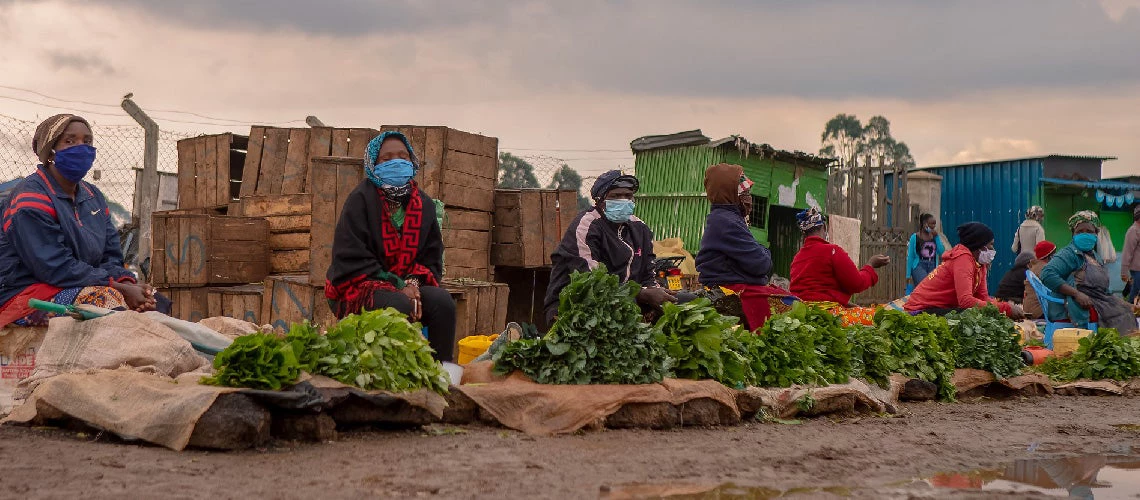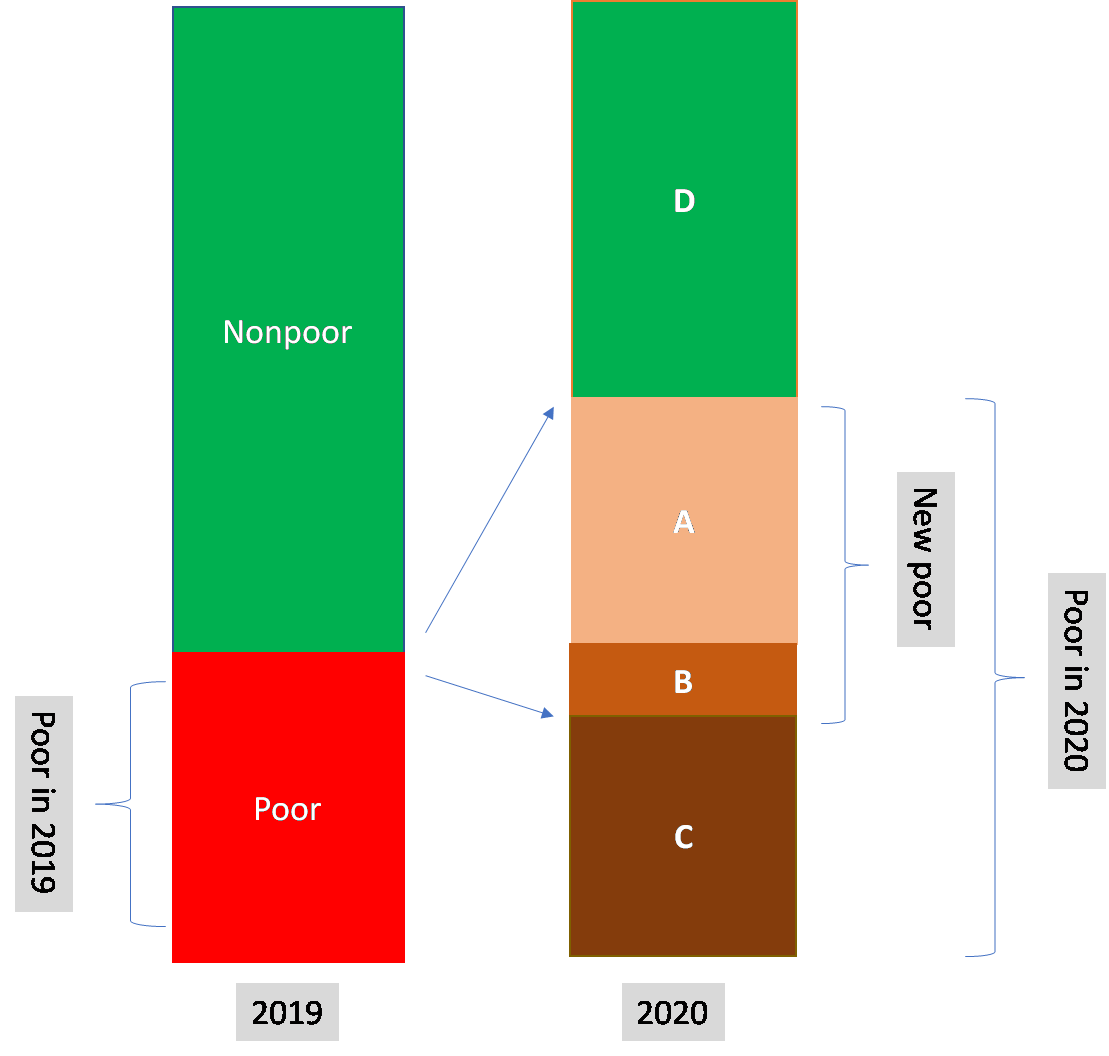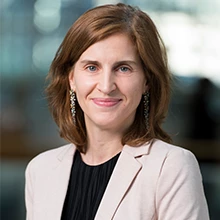 الصورة: البنك الدولي / سامبريان مباابو
الصورة: البنك الدولي / سامبريان مباابو
The latest World Bank Group projections suggest that the COVID-19 pandemic and the associated economic crisis could push between 71 and 100 million people into extreme poverty. To provide effective support to these people, we need to understand who they are, where they live and work, and how they have been affected by the crisis.
We use data from the Global Monitoring Database (GMD) — a collection of harmonized national household surveys used for global poverty monitoring that contains information, among others, on expenditures per capita, household and household head demographics, housing conditions, and location — to identify and profile the new poor. We do so by comparing the world in 2020 with and without COVID-19. Figure 1 illustrates how this works. Before COVID-19 the share of poor was projected to fall, whereas it is now projected to increase. The new poor are therefore a combination of (i) those who would have exited poverty in the absence of COVID-19 but are now projected to remain poor (area B) and (ii) those projected to fall into poverty because of COVID-19 (area A). In practice, we use GDP growth projections from the January 2020 GEP and the June 2020 GEP (baseline scenario) respectively to construct poverty profiles for 110 countries with and without COVID-19 using the GMD and then aggregate this information into a global profile of the new poor.
Figure 1. Identification of the new poor at the country level
Many of the new poor probably will be found in cities. Stringent health containment measures have brought a large share of economic activity to a halt in urban areas, leaving many urban poor and vulnerable without a way to make a living almost overnight. In line with this, the profile suggests that 30 percent of the global new poor will reside in urban areas, compared to 20 percent of the existing poor.
Because the existing poor tend to be concentrated in rural areas, the profile of the new poor is likely to differ significantly. Working-age adults among the new poor are more likely to work outside agriculture than the existing poor (44 percent versus 32 percent of all employed), with the differences in employment patterns being the largest in the manufacturing (7.3 percent vs. 4.7 percent) and construction (6.0 percent vs. 2.8 percent) sectors. The new poor are also more likely to work as paid employees (30.7 percent versus 17.0 percent of all employed) and less likely to be self-employed (39.7 percent vs. 45.6 percent) or work in a family business (20.3 percent vs. 27.4 percent) than the existing working poor. Finally, given average differences in education levels between rural and urban areas, it is perhaps not surprising that the share of working-age adults with at least some secondary or tertiary education is higher among the new poor than the existing poor.
This is not to say, however, that rural areas will not be affected. Over time, these areas, which tend to be poorer to start with, probably will experience a deterioration in living conditions, including among the existing poor. As mobility restrictions increasingly affect farm and non-farm activities and access to markets in rural areas, the rural poor are likely to face important income losses. Many rural communities are also facing critical challenges as they integrate massive inflows of returning migrants in a context of limited access to food and supplies. Combined, these developments will contribute to both a deepening and a widening in rural poverty. They also explain why, despite the urban bias discussed above, a significant share of the new poor is likely to work in agriculture (56.6 percent of all employed) or in a family business (20.3 percent), both of which are common in rural areas and associated with higher levels of vulnerability to poverty.
In constructing the profile of the global new poor, we assume that GDP growth is distributed neutrally across the income distribution, or that the income or consumption of all households within a country changes by the same rate. This is a necessary assumption in the absence of up-to-date information on actual changes in income and consumption in developing countries, but it is also a strong assumption that could affect the results of the exercise. Fortunately, simulation exercises based on country-specific parameters and information on economic impacts and aimed at assessing the potential poverty and distributional impacts of COVID-19 produce very similar (qualitative) results. For instance, simulation results for South Africa, Nigeria, Bangladesh, Mexico and Brazil confirm that most of the new poor will be urban. They also show that the new poor are likely to be disproportionately employed outside agriculture (e.g. in manufacturing, construction and wholesale and retail in South Africa; in services in Nigeria and Indonesia), and are self-employed or paid workers (e.g. Peru). And the same is true for emerging data from high-frequency monitoring surveys of COVID-19 impacts on households. For instance, in Ethiopia 60.5 percent of urban households report having suffered an income loss due to COVID-19, compared to 51.6 of rural households. Comparable numbers for Mongolia and Uzbekistan are 81 percent (urban) versus 19 percent (rural) and 46 percent (urban) versus 37 percent (rural) respectively.
Protecting households from the impacts of COVID-19 will require the implementation of policies and programs that reach both the existing and new poor. Given the differences between those groups, an effective response calls for the adaptation of safety net programs designed to support both groups through the use of innovative targeting and delivery mechanisms, and for an economic recovery that reaches those in the informal sector in both rural and urban areas.



Join the Conversation